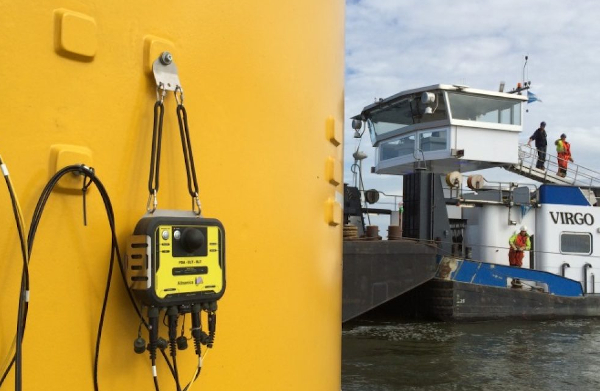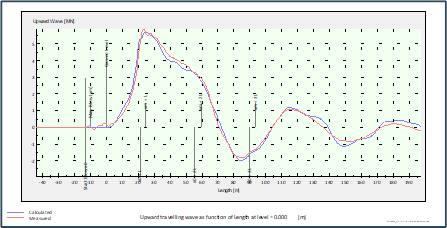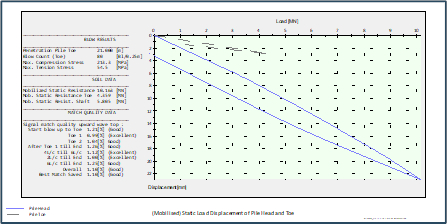AllWave-DLT Software for DLT/PDA Signal Matching
AllWave-DLT Software for Signal Matching of DLT/PDA signals
AllWave-DLT is the software to calculate the mobilised bearing capacity of a tested pile. Input are signals from Allnamics’ PDA/DLT measurements.
In accordance to EuroCode 22477-4, exhibit E, ASTM, and other codes for high strain dynamic testing.
Key Benefits
- Calculation of soil capacity from Allnamics-DLT signals
- Result is the calculated (mobilized ) static load-settlement diagram
- Based on Method of Characteristics for accurate simulations
- Modelling of soil layers, and changes in pile cross section
- Easy to operate, AutoMatch supported
- Generate unit shaft friction as function of depth, and toe resistance
StatRapid is one of the methods of Rapid Load Testing

AllWave-DLT
AllWave-DLT is one of the modules of the AllWave Stress Wave Simulation Software Package. AllWave includes programs for the quantitative interpretation of DLT/PDA signals.
AllWave is a Wave Equation Program based on the method of characteristics for one-dimensional stress waves and offers the possibility to simulate stress wave propagation in piles, including soil behaviour and pile impedance changes.
The DLT Signal Matching process is supported by several utilities, including AutoMatching support.

What is AllWave-DLT Signal Matching?
The process of analyzing dynamic load testing results is generally referred to as
“signal matching”. As the name suggests, the aim of the process is to determine an analytical “match” to a measured pile-driving signal.
The process begins when the measured signal from a dynamic load test is introduced as input to the pile-soil system at the instrumentation level. The analytical signal is then calculated and compared to the measured signal. Because the properties of the pile are generally modeled very accurately (with the exception of cast-in-place piles), any difference between the measured and calculated signal is because of the soil model used for the calculations. Consequently, the soil parameters throughout the soil profile are changed until good agreement is obtained between the measured and calculated signal. Once a good match has been established, the static and dynamic components of the soil resistance along the pile (shaft friction) and underneath the pile (toe resistance) are known. This allows the calculation of the static bearing capacity
of the pile, which is the sum of all static contributions of the soil to the pile, because the dynamic soil resistance occurs during driving only.

AllWave Software Packages
The AllWave software programs are all based on the one-dimensional stress wave propagation. Available are
- AllWave-PDP Driveability Studies for Impact Hammers
- AllWave-VDP Driveability Studies for Vibratory Hammers
- AllWave-DLT Signal Matching for Dynamic Load Testing (DLT/PDA)
- AllWave-RLT Simulation of Rapid Load Tests
- AllWave-SIT for profiling pile shape from SIT signals
Input of soil data
The Signal Matching process starts with modelling of the soil conditions.
The initial soil model is based on the soil investigation results. CPT’s, SPT’s and other soil investigation results can be imported digitally or digitized using the AllWave Soil Digitizer. Manual input of soil layers and soil parameters is possible as well.

The Signal Matching process
During the Signal Matching process the soil model is adjusted until a good match between the calculated and measured upward travelling wave is obtained. The upward travelling wave contains information on the interaction between soil and pile shaft and toe.
AllWave-DLT comes with an AutoMatching support, which helps the users to make the right adjustments to the soil model. However, basic knowledge of soil mechanics and foundation engineering is required.

Results
Result of the Signal Matching process is the calculated mobilised static behavior of the foundation pile, the calculated unit shaft friction over the pile length and the calculated toe resistance.

Reporting options
The software includes a powerful report generator:
- Results in text and graphs
- Selection of graphics, cut and paste to MSOffice documents
- Export to Excel
ADVANTAGES
- Calculation of mobilised static resistance from DLT/PDA signals
- Easy to operate, AutoMatch supported
- Calculates shaft friction along the pile shaft and toe resistance
- Supported by Allnamics team with over 50 years of PDA/DLT experience
Allnamics ON YOUTUBE
- Pile Load Testing at Hamburg, Germany
- Rapid Load Testing for wind farms
- StatRapid tests
- Rapid Load Testing, DownTown at The Hague, The Netherlands
- StatRapid tests
- Offshore Dynamic Load Test
- Pile Driving Analysis Prefabricated Concrete Pile Junttan Hammer with Allnamics PDR
- Allnamics PDA Pile Driving Analysis for Offshore Monopile
- PDA and DLT tests in Egypt
- Dynamic Load Testing in Switserland
- Dynamic Load Testing and Pile Driving Analysis in Dover UK with slow motion of a hammer blow


